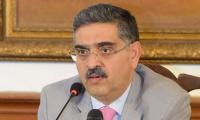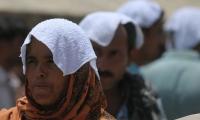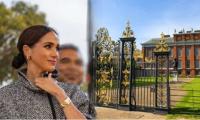In the first place, we need to celebrate the fact that an individual like Dr Adibul Hasan Rizvi and an institution like the Sindh Institute of Urology and Transplantation (SIUT) are possible in Pakistan. This week, an international symposium was held to mark 40 years of SIUT’s potentially story-book existence. And this was an opportunity to focus on a unique journey of growth and achievement.
The message, on this anniversary, was simple: “Every human being has the right to access healthcare irrespective of caste, colour or religious belief. Free with dignity and compassion”. There has been a particular emphasis on “free with dignity” and how this principle is applied in the sphere of organ transplantation and other related treatment is truly a spectacle.
But I still find is difficult to make sense of how SIUT relates to the country’s health sector as such and how has it impacted upon society at large in the context of commitment and values that are personified by Dr Adib Rizvi. I just cannot explain why, while attending the inaugural session of the symposium, I was both very elated and depressed. It seemed that I was momentarily ensconced on a sunlit island, surrounded by a sea of misery and grief.
Have I been overtaken by my possibly congenital pessimism that is born of my professional constraint to chronicle the affairs of the state, week after week? Is SIUT not a good enough peg for a happy column that is illuminated with hope and appreciation? Yes, how can one not be overawed as well as inspired by this example – and I am not going into statistical details about SIUT’s 40-year existence. At the same time, though, things have to be put into context.
For that matter, there was this presentation by Dr Adib Rizvi himself at the inaugural session. He had done so in somewhat greater detail at the pre-symposium seminar held on Friday last week on the subject of ‘Civil Society’s Perception about SIUT’. He highlighted the decline in our social conditions, particularly in economic terms. The rich are getting richer and poor are getting poorer.
SIUT itself is expanding. What began as a six-bed health facility has been transformed into an 850-bed hospital and a degree awarding institution. But other things in the health sector are shrinking. Pakistan’s current spending on health is just 1.7 percent of the GDP. It is too low even when compared with other developing countries. In spite of exceptional levels of philanthropy in the country, privatisation of healthcare has denied the masses access to good medical care. “We can’t let them die because they can’t afford to live”, says Dr Adib Rizvi.
It may be worthwhile to connect SIUT’s celebration with other events of this week. I detect an unseen bond between the state of our health sector and the relations between India and Pakistan because a security state is bound to neglect the welfare of its citizens. That both countries have officially declared the resumption of what is now phrased as the ‘Comprehensive Bilateral Dialogue’ has come as a pleasant surprise. There was a touch of drama in how they arrived at this moment.
On centre stage was Indian Minister for External Affairs Sushma Swaraj when she arrived in Islamabad to attend the Heart of Asia-Istanbul Process conference. The conference was in fact about Afghanistan. But whenever India and Pakistan are participants in a regional meeting, they hog the attention by either talking to each other or by not talking to each other. Anyhow, this turn of the tide was propelled by the seemingly chance meeting between Narendra Modi and Nawaz Sharif on the sidelines of the Paris conference on climate change.
This was followed by a more substantive meeting of the national security advisers of the two countries in Bangkok. It was Sushma who provide a touch of grace to this series of encounters, with her poetic mix of Hindi and Urdu.
So, we can celebrate this revival of hope in South Asia after a treacherous round of hostility and even an actual exchange of firing across the Line of Control and the Working Boundary. A spurt of intolerance on the part of Hindu nationalists in India and a surge in anti-Pakistan rhetoric had clouded the horizon and no one was expecting an early resumption of talks. But it has happened. Once again.
The question I posed to myself was: is this not something to celebrate and be happy about? I am not sure. It is true that the obsession that both countries have with each other is at the root of many of our derelictions, including the poverty of our social sector. The dividends that peace would bring are so obvious that rulers on both sides of the border have to be patently unreasonable to repeatedly ruin any scope for a genuine reconciliation. Hence, they have been playing a game for all these years.
Meanwhile, Pakistan was able to cultivate the dark forces of religious extremism and intolerance within its own borders and the consequences have been horrendous. In that sense, the enemy within became a major distraction. Also on this front, there have been signs of hope, though resolute action was initiated after a tragedy that bears the ignominious date of December 16.
Hence, when we look back at how we have confronted our challenges and try to understand the aftermath of the policies that we had adopted, the present campaign against terrorism and extremism emerges in the forefront. In just three days, we will observe the first anniversary of the massacre of our schoolchildren in Peshawar. And a scrutiny of what we have done during the past year will be valid.
Look around and you may feel that many of our expectations have not been realised. Our rulers have not attacked the sources of extremism and fanaticism witfh the passion and resolve that the Peshawar barbarity had commanded. There are issues about how the National Action Plan is being implemented, mainly in the context of regulating madressahs.
There was this San Bernardino reminder of the urgency of probing the potential cradles of radicalism and extremism, irrespective of the route that was taken by Tashfeen Malik. Unfortunately, there are still suspicions about the role of some elements within the government and the establishment.
It is against this backdrop that SIUT stands like a tower of light. We also have a large number of committed and selfless activists striving for social justice. But what matters more is the big picture that will appear when you connect all the dots.
The writer is a staff member.
Email: ghazi_salahuddin@
hotmail.com
A man is counting Rs5,000 currency notes. — AFP/FileFiscal policy is a key arm of macroeconomic policy, one under...
A view of the Supreme Court of Pakistan. — Supreme Court website/FileWhat kind of firewall does the judiciary...
Indian soldiers stand alongside a barbed wire on the Line of Control. — AFP/FileAnti-Pakistan propaganda remains a...
A representational image showing farmers harvesting wheat crops in a field. — AFP/FileThere is a clear, lasting, and...
Pakistan's first president Major General Iskander Mirza while speaking with the Turkish Prime Minister Adnan...
Prime Minister Shehbaz Sharif pictured alongside President Asif Ali Zardari. — INP/FileBeing a man of action in...







